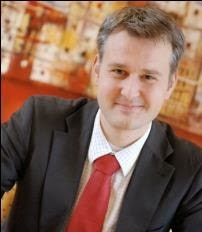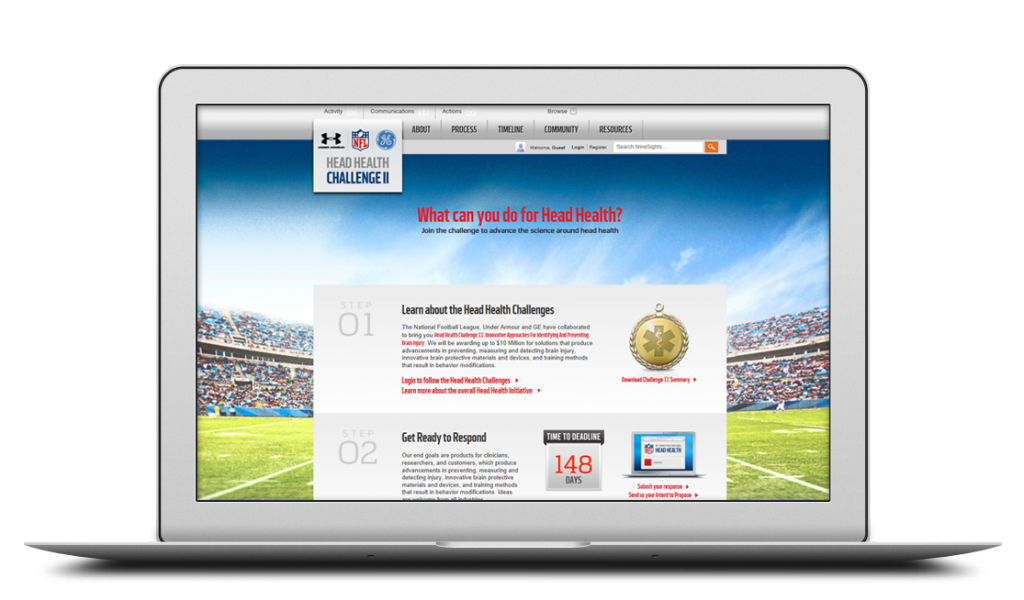The new model to achieve disruptive innovation is here!

At the Front End of Innovation Venice, Rick
Wielens, the CEO of NineSigma
Europe
will
introduce a new
model
to
achieve
disruptive
innovations
through
open
innovation. We had a chance to ask Rick for a sneak peek into his session and here's what he shared with us:
During
the
event
you
will
introduce
the
new
model
to
achieve
disruptive
innovations
through
open
innovation;
can
you
explain
how
this
model
works?
Maybe
I
can
start
with
an
important
perspective
that
Harvard
Business
School
professor
Clay
Christensen
introduced,
which
is
a
way
to
look
at
different
forms
of
innovation.
If
you
look
at
the
traditional
way
that
companies
have
used
open
innovation,
what
you
see
is
that
most
of
them
are
using
it
for
sustainable
innovation
purposes:
better
products
for
better
profits.
In
the
past
years
we
have
been
working
with
a
number
of
clients
on
real
breakthrough
innovations
and
technologies,
for
instance
the
Canadian
Government
who
wanted
to
tackle
a
huge
environmental
CO2
challenge,
that
result
from
the
oil
sand
extraction
in
the
province
of
Alberta.
They
were
looking
for
disruptive
innovation
so
they
could
find
solutions
for
capture,
re-''use
and
repurpose
of
C02.
If
you
want
to
create
a
disruptive
result,
then
obviously
you
need
to
match
that
ambition
with
the
scope
of
the
open
innovation
program.
And
that
is
exactly
what
they
did,
they
have
created
a
stretch
goal,
a
really
tough
objective
they
wanted
to
achieve
and
matched
it
with
a
prize
reward
structure.
This
prize
reward
structure
is
crucial,
as
you
need
to
create
a
real
benefit
for
the
people
to
respond
with
their
innovation
solutions.
They
did
this
by
defining
a
budget
of
$35
million
Canadian
dollars
for
a
multi-year
challenge.
And
when
I
say
people
that
respond,
what
I
am
really
talking
about
are
experts,
universities,
companies
and
organizations
that
have
real
relevance.
They
will
generate
options
for
the
future
that
are
perhaps
five
or
ten
years
into
the
future.
The
grand
challenge
approach
provides
now
a
pathway
to
commercialization
for
these
early
stage
technologies.
Can
you
give
a
clear
example,
related
to
the
outcome?
I
will
refer
to
the
GE/NFL'head health challenge'
as
an
example.
The
number
of
responses
that
you
typically
get
if
you
do
a
sustaining
innovation
focused
open
innovation
approach,
is
in
the
ten
to
forty
option
range.
In
the
GE/NFL
case
we
are
talking
about
over
600
options,
all
focused
around
head
health
diagnostics.
So,
it
is
the
richness
in
terms
of
quantity
of
ideas;
it's
the
originality
that
you
are
getting
in
through
the
cross
industry
outreach
and
it's
about
the
quality
of
the
responses,
because
we
are
targeting
the
right
communities
of
experts
and
people
in
the
field
that
have
relevance
to
the
topic.
Because
of
the
prize
money,
the
size
of
the
challenge
and
the
enormous
push
that
we
are
giving
in
terms
of
public
relations,
this
generates
a
huge
response
of
exceptional
quality.
How did GE/NFL
choose
NineSigma
as
their
partner?
Well,
one
of
the
reasons
why
they chose NineSigma
is
because
we
had
already
proven
to
General
Electric,
in
another
challenge
we
had
done
for
them,
that
we
actually
pull
this
quantity
and
quality
of
input.
When
GE
started
with
their
breast
cancer
challenge,
they
thought
what
they
needed
to
do
was
to
build
a
portal,
on
a
website,
do
a
lot
of
PR
and
then
all
the
fantastic
proposals
would
just
come
in,
automatically.
They
quickly
understood
that
it
is
really
about
the
design
of
the
challenge,
the
outreach
and
the
ecosystems
that
you
are
able
to
tap
into.
Just
having
a
website,
making
50
million
dollar
reward
money
available
and
generating
all
this
publicity,
does
not
bring
the
proposals
that
you
need
to
really
make
an
impact.
So,
what
we
have
done?
We
have
actually
reached
out
to
them
to
offer
to
boost
the
number
of
proposals
and
improve
the
quality
of
the
proposals.
In
a
few
months
we
were
able
to
push
the
thirty
or
forty
proposals
that
they
had
up
to
300
/
400
that
they
had
on
that
challenge.
Which
showed
GE
that
it
is
all
about
having
access
to
the
right
networks
and
ecosystems,
to
experts
and
also
the
type
of
messaging.
Don't
forget
that
when
you
do
a
PR
activity
you
reach
out
to
the
general
audience,
people
that
are
in
the
public
domain,
usually
with
the
wrong
message
and
to
the
wrong
crowd.
Those
people
are
not
necessarily
the
experts
and
the
doctors,
and
the
teams
that
are
developing
new
tools
and
methodologies
that
are
doing
scientific
research.
They
usually
do
not
respond
to
these
open
PR
activities,
because
they
are
not
invited
explicitly
to
respond
with
what
they
have
as
a
technology
and
basically
do
not
see
what
is
in
it
for
them.
I
think
that
is
what
we
are
great
at
and
that
is
why
they
came
to
us.
You
just
told
actually
that
there
are
3
important
things
there:
the
size
of
the
challenge,
the
prize
of
the
challenge
that
is
used
and
the
PR
amount
that
is
used
here
which
makes
it
different
from
regular
Open
Innovation
models.
But
is
there
something
else
that
differentiates
this
model?
What
we
are
seeing
and
what
we
are
learning
from
working
with
companies
like
GE
is
that
these
programs
are
not
driven
by
R&D,
or
by
the
CTO,
or
by
the
technology
teams
only
in
the
company.
These
programs
are
primarily
driven
by
a
Chief
Marketing
Officer.
So
there
is
a
different
starting
point
for
these
kinds
of
programs.
You
can
imagine
the
impact
it
has
on
their
organization
when
the
Board
of
the
company
is
involved,
in
terms
of
follow-''up,
necessary
investments
that
are
following
from
this.
The
kind
of
impact
that
it
needs
to
bring
is
different
if
you
are
working,
let's
say
with
only
the
technologies
community,
because
of
they
are
typically
focused
on
costs
not
on
the
upside
perspective
for
the
business.
To
make
it
explicitly;
if
you
are
working
with
the
marketing
people
they
are
looking
at
it
from
a
business
opportunity
perspective;
'what
is
the
impact
that
we
as
a
business
can
have
by
having
this
portfolio
of
options
available'.
And
from
the
opportunity
side,
the
limits
in
terms
of
allowable
expense
are
directly
related
to
the
upside
that
you
are
able
to
create.
So
in
other
words,
the
impact
that
you
can
have
because
it
is
about
developing
and
growing
markets
and
growing
market
share.
A
pure
technology
community
approach
focuses
on
efficiency,
doing
innovation
as
efficiently
as
possible
with
a
preference
to
utilize
the
internal
resources.
But
there
is
no
upside
perspective
in
that
scenario;
it
doesn't
address
market
growth
or
market
access.
The
starting
point
for
this
one
is
really
a
marketing
perspective,
an
upside
perspective.
So
that
really
means
that
in
the
sharing
of
the
opportunity
and
the
sharing
of
the
profits
that
come
out
of
this,
there
is
a
different
dynamic
inside
those
client
organizations.
I
think
it
is
not
so
visible
from
looking
inside
a
grand
challenge
itself
and
what
are
the
ingredients.
But
it's
very
clear
from
the
interaction
inside.
What
is
the
period
for
this
grand
challenge,
from
the
beginning
until
the
end?
These
are
typically
multiple
year
programs.
For
the
first
phase
of
the
challenge
that
we
have
done
for
GE
for
instance,
you
are
talking
about
a
year.
The
challenge
itself
is
only
open
for
4
to
6
months,
so
that
is
not
that
different
from
our
RFP
kind
of
model
where
we
are
basically
opening
it
for
six
or
five
weeks.
As
a
sort
of
response
time,
in
this
case
we
are
leaving
more
response
time
because
we
are
obviously
building
it
up,
also
in
terms
of
communication,
PR
and
visibility.
And
the
typical
thing
is
that
the
day
before
the
deadline
a
big
part
of
the
proposals
come
in,
so
there
is
an
enormous
so
called
hockey
stick
effect
that
you
get
towards
the
deadline.
We
know
people
work
against
these
deadlines.
We
want
to
make
sure
that
people
just
have
a
bit
more
time
to
create
a
fantastic
proposal,
to
make
sure
that
they
do
respond.
But
it
needs
a
deadline
and
it
needs
to
be
limited
to
get
sufficient
traction.
About
Rick Wielens joined NineSigma in 2010 and is responsible for NineSigma Europe. Previously, Rick worked with his own company in open innovation and expert services mainly in the High Tech area in The Netherlands and Germany.
Over the past three years Rick and his team have worked with many of the innovation leaders in Europe, delivering concrete results in their open innovation programs. With a background in supply chain management and traffic engineering, Rick has experience in business development, open innovation and innovation management, business strategy and large organizational change and ICT implementation programs.
Rick brings international experience working in Germany for SAP and in The Netherlands for Royal Philips Electronics in various roles and industries. Rick holds a M.Sc. in Transport Planning and Management from the Westminster University in London and a BA in Traffic Engineering from the University of Applied Science in Tilburg.
NineSigma is an Innovation Company, established in 2000, a two-time Weatherhead 100 Winner headquartered in Cleveland, Ohio, with offices and service delivery in North America, Europe, Japan, Korea, South Africa and Brazil.. NineSigma partners with its clients to accelerate innovation in four areas: Organic Growth, Managing Risk, Overcoming Gaps and Stimulating Culture. NineSigma brings knowledge and solutions from around the world with the power of our Open Network. Their client industries are varied and include Automotive, Apparel, Building Products, Chemicals, Consumer Products, Electronics, Financial Services, Food, Materials, Medical Devices, Mining, Pulp & Paper and many others.
Editor's Note
To accelerate innovation you need to connect to the smartest, most accomplished thought leaders across industries, which you will find at the Front End of Innovation Venice. Join Rick Wielens and other fearless innovation peers this 17-19 of March at Ca' Foscari University, Venice, Italy where together you will build an ecosystem that drives continuous value creation.







